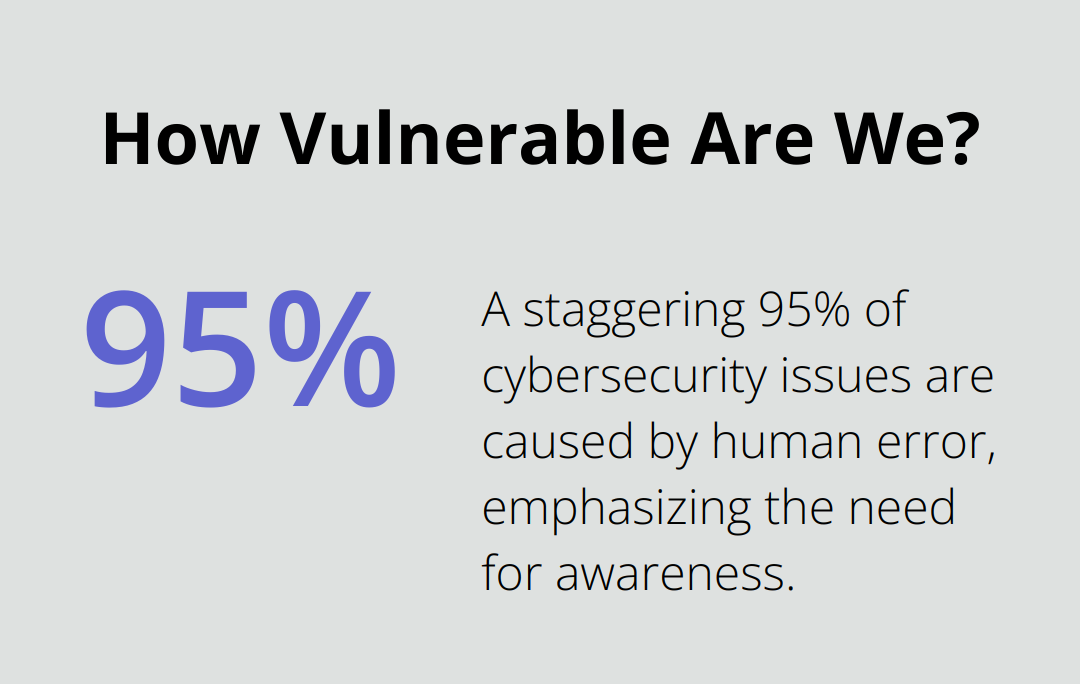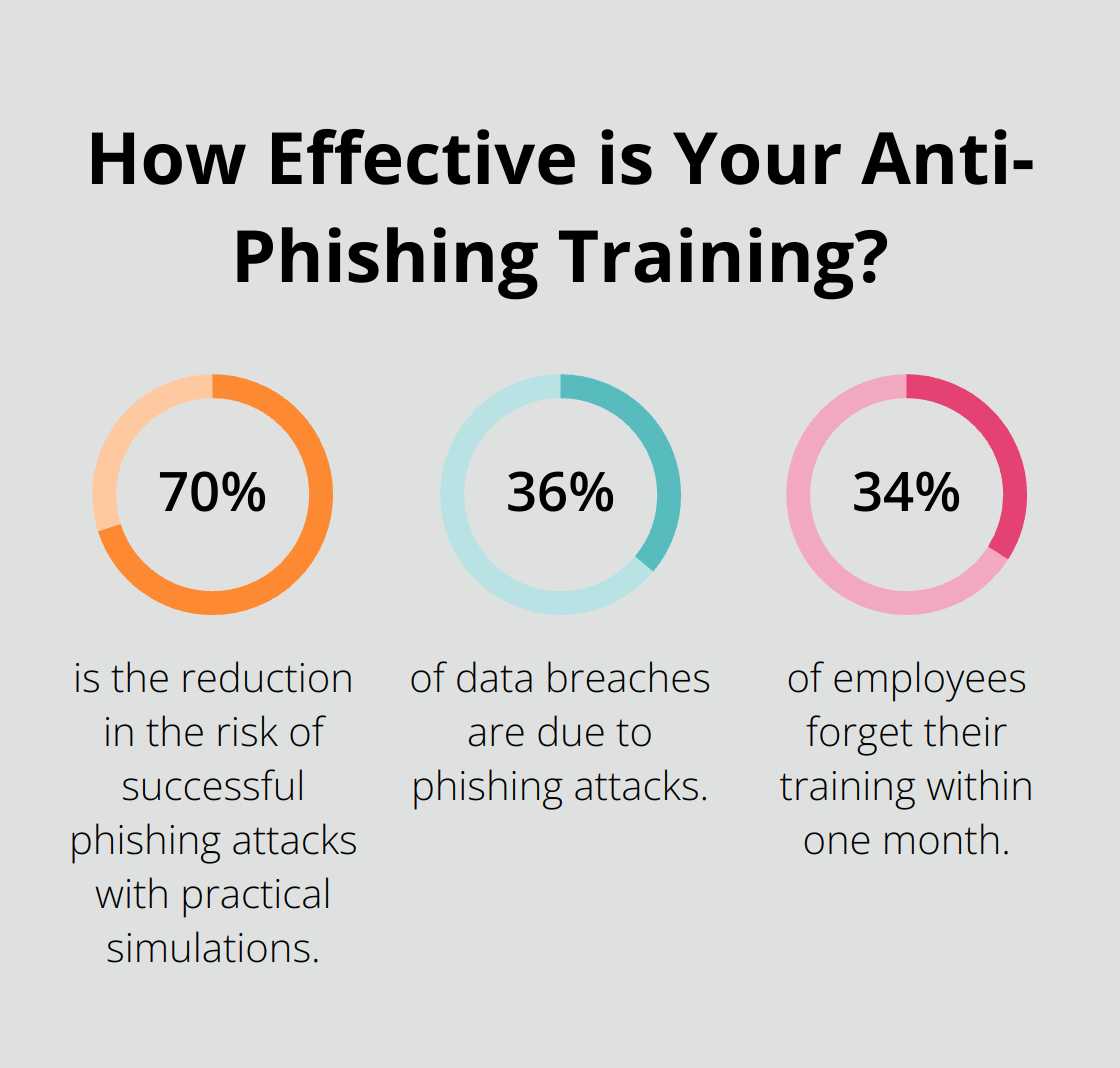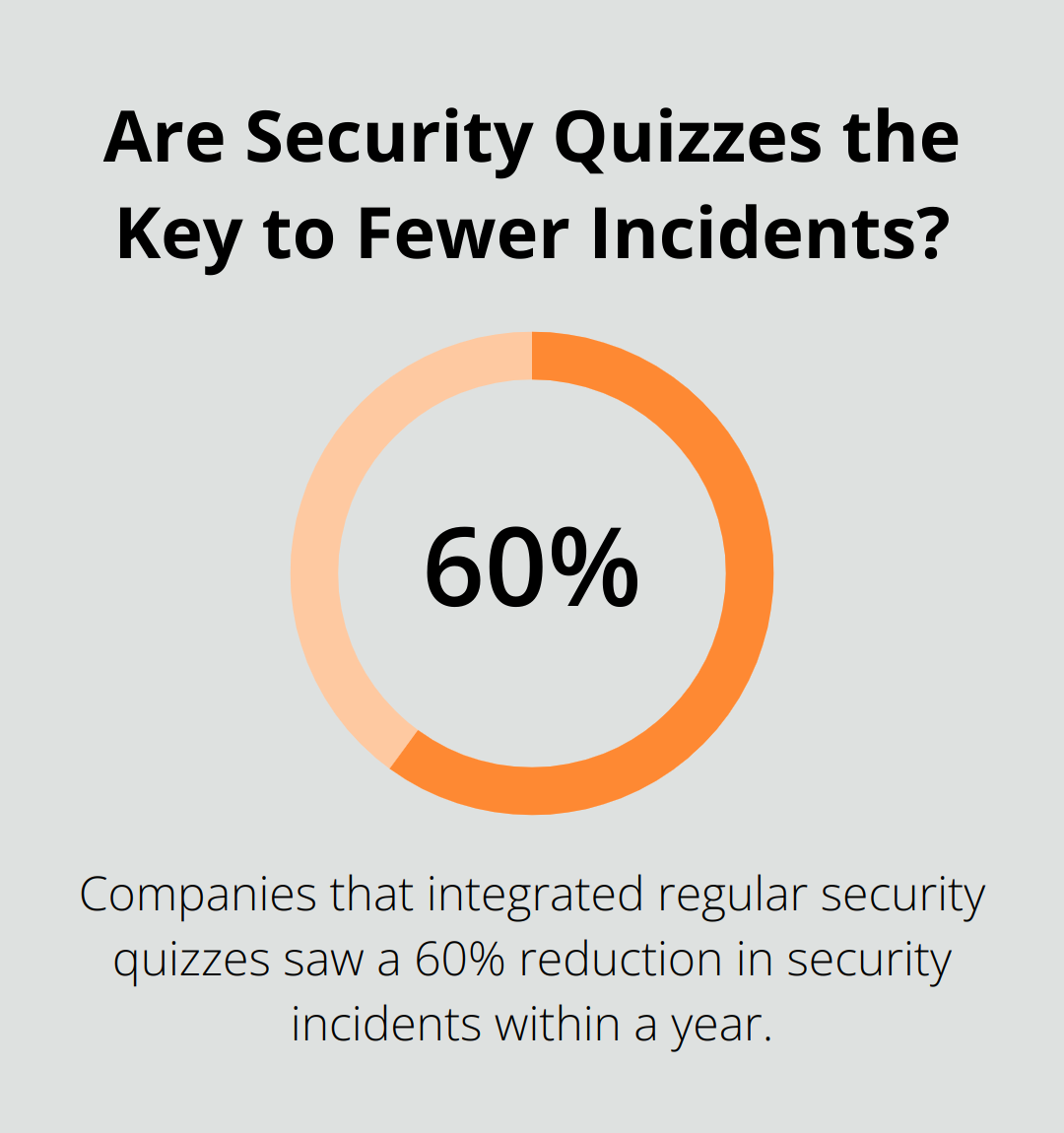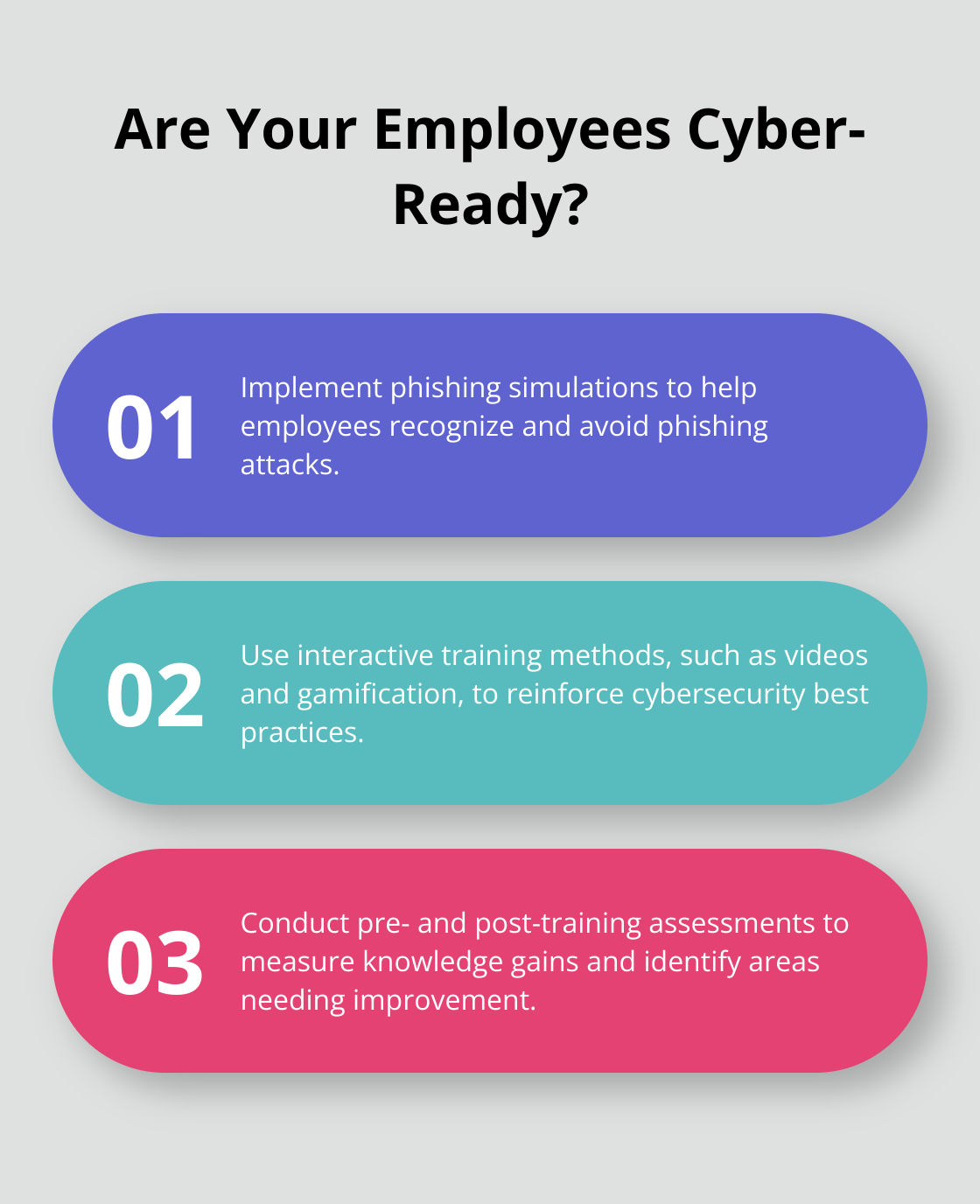Hello, you are using an old browser that's unsafe and no longer supported. Please consider updating your browser to a newer version, or downloading a modern browser.
Hello, you are using an old browser that's unsafe and no longer supported. Please consider updating your browser to a newer version, or downloading a modern browser.
Published by Mike McNelis on June 6, 2024

Cybersecurity threats are on the rise, affecting businesses of all sizes. A thorough training program is vital to safeguard sensitive data.
At Training Camp, we draw on proven strategies to enhance cybersecurity awareness. This blog post covers key components, best practices, and methods to measure training effectiveness.
Effective cybersecurity awareness training covers several critical areas that ensure employees can identify and respond to threats promptly. These components form the backbone of a robust cybersecurity strategy, significantly reducing the likelihood of data breaches and other security incidents.
It’s essential to educate employees about the most common cyber threats they may encounter. A staggering 95% of cybersecurity issues are caused by human error, emphasizing the need for awareness. Training should focus on phishing, ransomware, social engineering, and malware, as these are the prevalent threats. For instance, phishing attacks are continually evolving, and employees must recognize the red flags associated with suspicious emails and messages. Phishing simulations can help simulate real-world scenarios, making training more interactive and effective.
Security best practices are the foundation of any cybersecurity training. Employees should be taught to create strong, unique passwords, use multi-factor authentication, and maintain regular software updates. Given that stolen passwords are a leading cause of breaches, passwordless authentication is gaining traction as a more secure alternative. In addition, regular training updates are vital as employees start to forget critical information after about four months. Engaging training methods, such as videos and interactive content, can help reinforce these best practices.
Clear and consistent communication of company policies is crucial. Employees need to understand the protocols for reporting suspicious activities and the procedures for handling sensitive information. Regularly reviewing and updating these policies, and ensuring that employees are aware of any changes, is necessary for maintaining a secure environment. It’s also beneficial to use various mediums, such as infographics and webinars, to convey this information effectively. For practical advice on implementing such strategies, check out this cyber hygiene guide.

By addressing these key components in cybersecurity awareness training, organizations can create a more informed and vigilant workforce, ready to tackle the growing threat landscape with confidence.
To make cybersecurity training effective, it is essential to use real-world scenarios and examples. These scenarios make the training relatable and more impactful. For example, a recent report revealed that phishing attacks accounted for 36% of data breaches. By simulating real phishing attacks, employees can better understand how to identify and avoid such threats. Moreover, incorporating case studies from well-known incidents can drive home the importance of vigilance.
Hands-on training and simulations play a critical role in reinforcing cybersecurity principles. Research has shown that practical simulations can reduce the risk of successful phishing attacks by up to 70%. Organizations should implement interactive training modules that allow employees to practice responding to threats in a controlled environment. Tools like threat detection simulators and cybersecurity gamification are excellent for keeping employees engaged while teaching them to handle security incidents effectively. More insights on addressing phishing attacks can be found here.
Cyber threats are constantly evolving. Therefore, cybersecurity awareness training should not be a one-time event. Organizations must invest in continuous learning and regular updates to keep employees informed about the latest threats and security practices. Studies indicate that employees forget up to 34% of their training within one month, and up to 75% after six months. Regular refresher courses, periodic quizzes, and updated training content are crucial for maintaining high levels of cybersecurity awareness. Implementing ongoing learning practices ensures that the workforce is always prepared to tackle new threats effectively. For a deeper understanding of agile practices, this blog offers valuable insights that can be applied to continuous cybersecurity training.

Measuring the effectiveness of cybersecurity training is essential to ensure that the program is producing the desired outcomes. Various methods can be employed to evaluate how well employees have absorbed the training material and how effectively they can apply it in real-world scenarios.
Conducting pre- and post-training assessments is a practical approach to gauge the effectiveness of a cybersecurity training program. Pre-training assessments can help establish a baseline of employees’ current knowledge and skills. Once the training is completed, a post-training assessment can reveal how much knowledge has been gained. Studies indicate that these assessments can measure a 20-40% increase in cybersecurity awareness. This data can help identify areas where employees may still have knowledge gaps, enabling targeted follow-up training sessions to address specific weaknesses.
Incident reports and employee feedback offer valuable insights into a training program’s effectiveness. A decrease in the number of reported security incidents over time can indicate improved employee awareness and adherence to best practices. Additionally, gathering employee feedback can pinpoint which aspects of the training were most beneficial and which need improvement. For example, companies that integrated regular security quizzes saw a 60% reduction in security incidents within a year. Utilizing tools that allow employees to report phishing attempts can also help monitor real-time training effectiveness.
Flexibility and adaptability in a training program are critical. Training content must evolve to address new threats and to keep the material engaging and relevant. Analyzing the results from assessments, incident reports, and feedback should inform necessary adjustments. For instance, if there’s a spike in malware incidents, incorporating more in-depth modules on malware prevention and response can be beneficial. Adjusting the program based on actual data ensures that it remains aligned with the current threat landscape. Practical, updated training is critical, as highlighted in our guidelines on phishing attacks.

By implementing these practical strategies, organizations can create a more resilient cybersecurity culture and continually improve their defenses against evolving threats. Keeping track of these metrics not only helps in fine-tuning the training program but also in ensuring a safer organizational environment.
Implementing effective cybersecurity awareness training involves several strategies. Training programs should cover identifying common cyber threats, establishing security best practices, and clearly communicating company policies and procedures. Using real-world scenarios, hands-on simulations, and continuous learning methods ensures that employees remain vigilant and prepared against evolving threats.

Continuous improvement is vital in maintaining a successful cybersecurity training program. Regularly assessing training effectiveness through pre- and post-training assessments, monitoring incident reports, and gathering employee feedback allows organizations to adapt and refine their training materials. Flexibility in the training content ensures it remains relevant and engaging, helping maintain a high level of cybersecurity awareness.
Building a cyber-aware culture requires an ongoing commitment to training and education. Organizations must stay proactive, continually updating training programs to address the latest threats. By fostering an environment where employees feel empowered and informed, businesses can significantly reduce the risk of security breaches and protect sensitive data.
At Training Camp, we specialize in offering award-winning IT certification programs, including cybersecurity training tailored to both commercial and military needs. Our accelerated courses, supported by an Exam Pass Guarantee, help individuals and organizations achieve their security goals efficiently. For those looking to enhance their cybersecurity readiness, explore more about our cybersecurity training offerings.
Back to All Posts